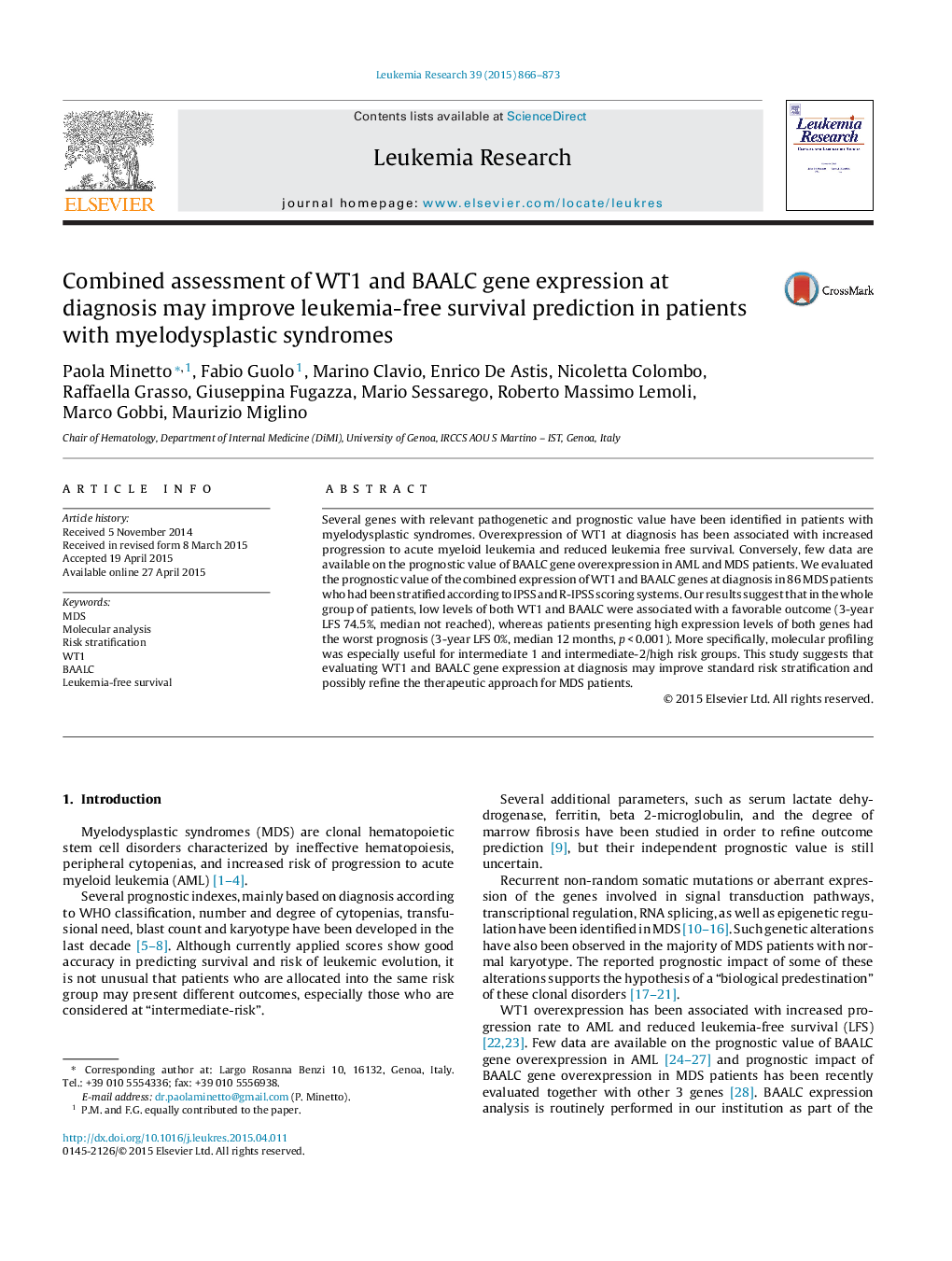| Article ID | Journal | Published Year | Pages | File Type |
|---|---|---|---|---|
| 2136597 | Leukemia Research | 2015 | 8 Pages |
•We analyzed WT1 and BAALC expression levels in MDS patients and diagnosis.•WT1 and BAALC combined assessment independently correlated with LFS duration.•Molecular evaluation could further improve IPSS and R-IPSS stratification.•Adding molecular data to standard prognostic score may help therapeutic choices.
Several genes with relevant pathogenetic and prognostic value have been identified in patients with myelodysplastic syndromes. Overexpression of WT1 at diagnosis has been associated with increased progression to acute myeloid leukemia and reduced leukemia free survival. Conversely, few data are available on the prognostic value of BAALC gene overexpression in AML and MDS patients. We evaluated the prognostic value of the combined expression of WT1 and BAALC genes at diagnosis in 86 MDS patients who had been stratified according to IPSS and R-IPSS scoring systems. Our results suggest that in the whole group of patients, low levels of both WT1 and BAALC were associated with a favorable outcome (3-year LFS 74.5%, median not reached), whereas patients presenting high expression levels of both genes had the worst prognosis (3-year LFS 0%, median 12 months, p < 0.001). More specifically, molecular profiling was especially useful for intermediate 1 and intermediate-2/high risk groups. This study suggests that evaluating WT1 and BAALC gene expression at diagnosis may improve standard risk stratification and possibly refine the therapeutic approach for MDS patients.
